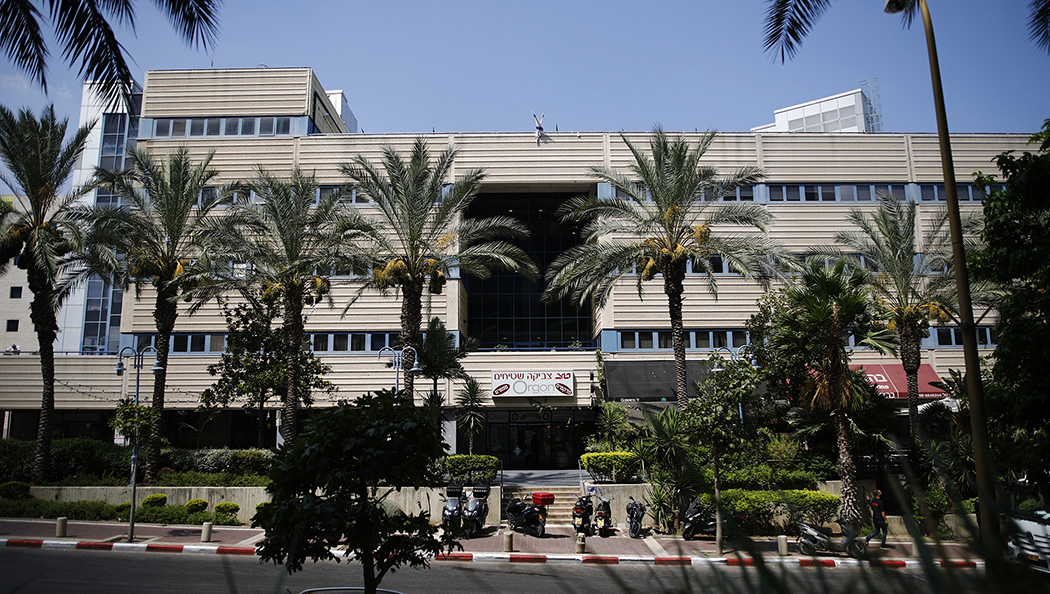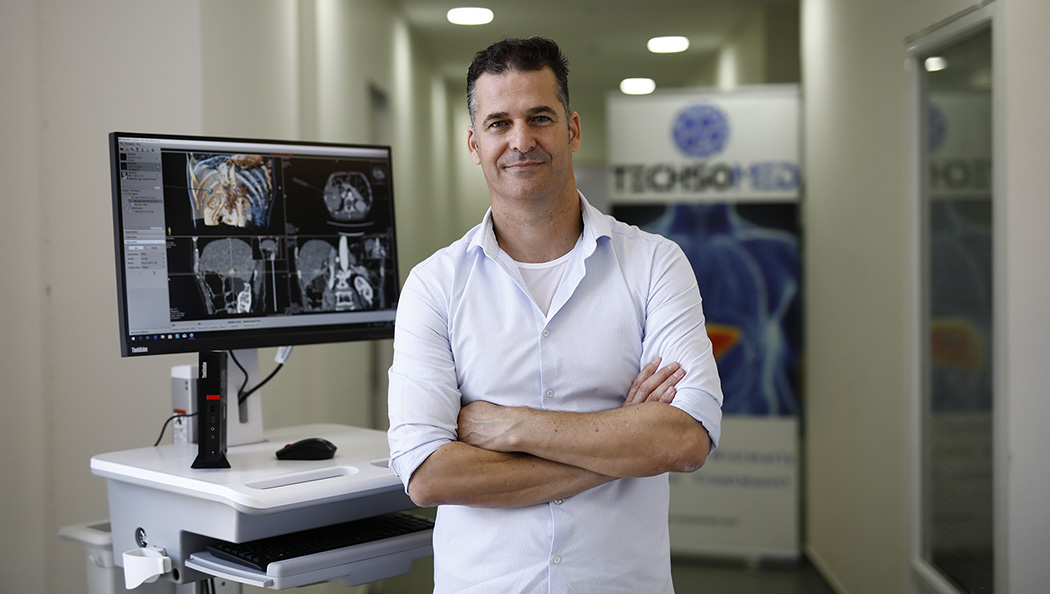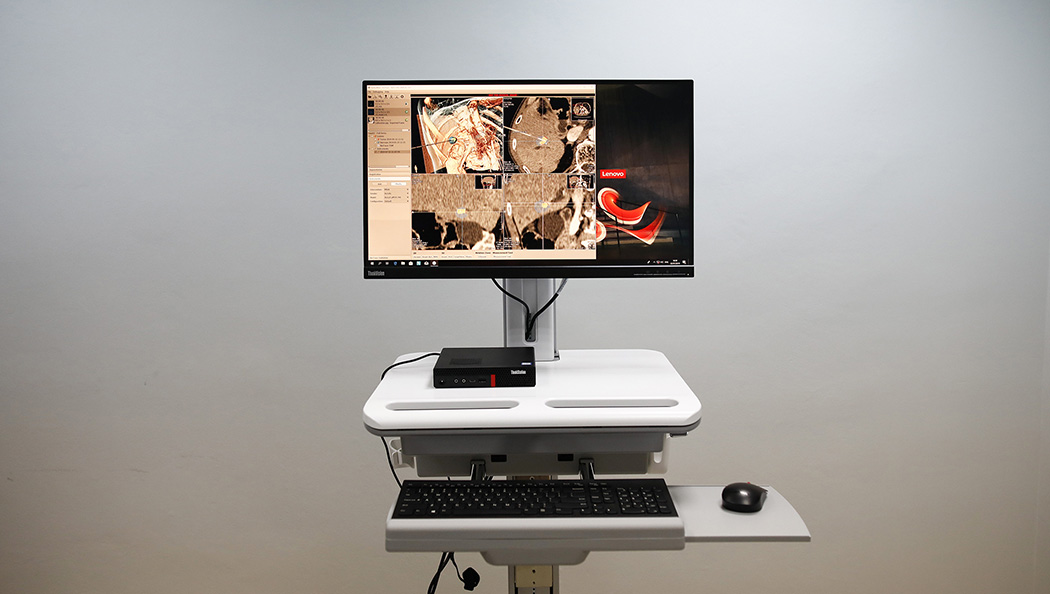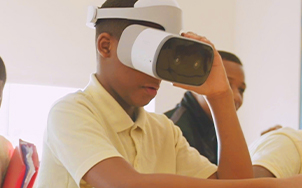BioTrace allows doctors to see the invisible
To treat cancerous tumors, physicians have long relied on surgery, chemotherapy and radiation -- highly invasive treatments that push patients’ bodies to their limits. Surgically removing tumors requires long hospital stays and recovery times with extensive follow-ups. Not to mention, these standard treatments cost tens of thousands of dollars and have serious risks and complications, often requiring days or weeks for recovery.
In the near future, all of this might change.
Medical imaging company TechsoMed is revolutionizing the way physicians treat certain tumors by combining legacy medical methods with innovative algorithm-powered technology. They’ve set their sights on bringing a little-known cancer treatment called thermal ablation into mainstream use. This minimally invasive procedure takes under five minutes, resulting in fewer potential complications significantly shorter recovery times and costs up to ten times less than those of the alternative.
Thermal ablation works by applying intense heat to early stage tumors that are smaller than three centimeters in diameter. During a standard ablation, physicians use grainy ultrasound images to identify the “estimated treatment area,” but once they begin, they have no way of assessing the damage caused to the tissue by the ablation process. This can result in over-treatment -- the destruction of excessive tissues around the tumor -- or under-treatment, which can lead to tumor recurrence. An added problem: It takes up to 24 hours to learn how effective a procedure was.
FEATURED SOLUTIONS
“This is the common practice and the gold standard,” says Yossi Abu, the founder and CEO of TechsoMed. He plans to change that.
In Lenovo, Abu found a company that shared his startup’s vision of revolutionizing technology to benefit all. He remembers that the company took almost no convincing to partner with TechsoMed. And Lenovo, he says, was committed to operating under the unique constraints faced by startups, like size and budget limitations.
“Most companies don’t have the infrastructure to support small startups,” he says. “Lenovo took the risk. It was able to let us grow very, very fast -- and now we have four clinical sites!”

Human eyes see almost nothing, but BioTrace sees everything.
— Yossi Abu, Founder & CEO, Techsomed
And in Lenovo, TechsoMed found innovative products that met its complex needs. After developing the system’s algorithm on a ThinkStation P920, TechsoMed optimized it to run on smaller, local systems, like the ThinkStation P330 Tiny which are compact enough to fit inside any operating room. With human lives at stake, TechsoMed sought machines that were powerful enough to process immense amounts of data and — above all — reliable and durable. Every time a patient is on the operating table, TechsoMed knows it can trust its technology.
TechsoMed’s BioTrace ™ Solution addresses thermal ablation’s long-standing pain points by giving physicians eyes where once they were blind. Using image data from standard ultrasound devices, BioTrace performs real-time, continuous monitoring and analysis throughout the thermal ablation procedure. The system allows live tracing of a “cataclysmic number of factors,” Abu says, from the movement of the heart and lungs to the destruction of the cancerous tissue.

In Lenovo, Abu found a company that shared his startup’s vision of revolutionizing technology to benefit all.
Where typical ultrasound imagery is viewable on a 255-point grayscale, BioTrace images are composed of 65,000 layers of gray -- it’s like the difference between a pencil sketch and an immersive 3D movie.
The imaging isn’t just extremely clear -- it’s also predictive. This is important; during thermal ablation, 60 percent of the tumor damage happens over the 24 hours following the procedure. Using advanced AI algorithms, BioTrace tracks the targeted tissue’s unique biological signatures as it responds to the thermal ablation, then analyzes that data to visually simulate the effect of the treatment after the 24-hour period. During an ablation session, physicians can view the present and the future simultaneously.
BioTrace, Abu says, takes the guesswork out of thermal ablation therapies and transforms them into precisetreatments that use real time feedback to minimize healthy tissue damage and maximize target tissue ablation. It’s more efficient, and it reduces rates of tumor recurrence.
“Human eyes see almost nothing,” Abu explains. “But BioTrace sees everything.”

















